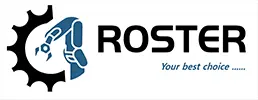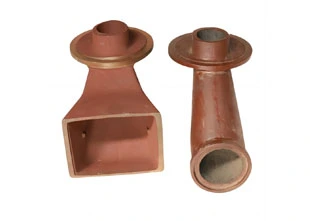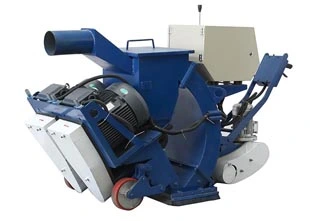Liquefied Petroleum Gas (LPG) cylinders are workhorses—safely storing and transporting gas for homes, businesses, and industries. But let's face it, these tanks go through a lot. Over time, rust, grime, old paint, and all kinds of buildup take their toll, compromising both safety and performance. That’s where LPG cylinder shot blasting machines step in, offering a fast, automated way to completely renew cylinders inside and out. These powerful machines not only restore metal surfaces but also prepare them for fresh protective coatings. In this post, we’ll explore exactly how these machines work, the different types available to meet various operational needs, and why they’ve become such a smart, industry-standard solution for keeping LPG cylinders in top condition year after year.
How LPG Cylinder Shot Blasting Machines Work
At first glance, the process seems straightforward—an LPG cylinder shot blasting machine hurls abrasive material at high speed to strip away years of accumulated gunk. But there’s much more engineering brilliance behind this seemingly simple concept. The machine uses specially selected abrasives, typically hardened steel shot carefully chosen for its ability to scour away tough contaminants without damaging the underlying metal. A powerful spinning wheel or similar mechanism propels these particles at incredible velocities, creating an intense cleaning force that reaches every curve and corner of the cylinder.
As this controlled bombardment occurs, layer after layer of rust, old paint, industrial grime, and other stubborn deposits get completely stripped away. What emerges is a beautifully clean, uniform surface with just the right texture for paint or protective coatings to bond perfectly. The system designs incorporate smart recycling too—used abrasives get collected, filtered to remove all the debris they’ve blasted off, and then reintroduced into the cleaning cycle. Meanwhile, the cylinders themselves move through the process either suspended from hooks, conveyed on rollers, or slid through on tracks depending on the machine type, ensuring complete and even exposure to the blasting stream.
Types of LPG Cylinder Shot Blasting Machines
The market offers several shot blasting machine configurations, each optimized for particular production environments and cylinder specifications. Hang hook type models, where cylinders are suspended and rotated in the blasting chamber, excel at handling complex shapes and ensuring no spots get missed—especially valuable for detailed cleaning of valves and fittings. Facilities focused on high-volume throughput often favor continuous overhead monorail systems where cylinders progress steadily along a conveyor line through the blasting zone, enabling non-stop processing ideal for large-scale operations.
For more standardized cylinder sizes, roller conveyor types provide excellent results with their simple yet effective approach—cylinders rotate on a series of powered rollers that expose every surface evenly to the abrasive stream. Some manufacturers opt for pass-through designs when they need straightforward, linear processing without complicated handling mechanisms. The choice ultimately comes down to carefully matching the machine’s capabilities to specific production volumes, cylinder sizes, and facility layouts—ensuring optimal efficiency whether refurbishing a few dozen cylinders per day or several thousand.
Benefits of Shot Blasting for LPG Cylinders
Beyond the obvious visual transformation, shot blasting delivers measurable improvements across multiple aspects of cylinder performance and safety. Speed stands out first—where manual cleaning methods consume hours of labor per cylinder, automated shot blasting achieves superior results in minutes while maintaining perfect consistency. The process creates an ideal surface profile that does more than just look good; this carefully textured finish dramatically improves paint adhesion and coating durability. Unlike poorly prepared surfaces where coatings might chip or peel prematurely, shot blasted cylinders maintain their protective layers much longer even in harsh operating environments.
Perhaps most importantly, thorough removal of corrosion and surface defects directly translates to extended service life and enhanced structural integrity. When every speck of rust gets eliminated and microscopic surface cracks get revealed and addressed during refurbishment, the result is cylinders that maintain leak-proof reliability for their full service lifetime. These cumulative benefits explain why forward-thinking operators consider shot blasting not just as a cleaning method, but as a comprehensive cylinder rejuvenation process that pays dividends in safety compliance, operational efficiency, and long-term cost savings.
Why Shot Blasting Matters for LPG Cylinder Maintenance
In an industry where equipment failure can have catastrophic consequences, shot blasting plays an essential preventative role in LPG cylinder maintenance programs. Regulatory bodies worldwide recognize properly cleaned and recoated cylinders as fundamentally safer pressure vessels. The process removes hidden corrosion that inspectors might miss during visual checks, effectively eliminating one of the most common failure points in aging tanks. Automated blasting systems also remove human variability from the equation—while manual cleaning results might depend on worker diligence and fatigue levels, machines deliver the same thorough, consistent clean every time.
From a business perspective, the economics make compelling sense too. The combination of reduced labor requirements, minimal abrasive waste (thanks to recycling systems), and extended cylinder lifecycles creates an attractive return on investment. Facilities also benefit from streamlined workflows—instead of cylinders spending days in various cleaning and preparation stages, shot blasting consolidates what was once a multi-step process into one efficient operation. As industries continue emphasizing sustainability, the ability to refurbish rather than replace cylinders aligns perfectly with environmental responsibility goals while maintaining rigorous safety standards.
Modern shot blasting technology represents one of those rare win-win scenarios where better technology simultaneously improves safety, efficiency, and cost-effectiveness in LPG cylinder maintenance. Whether applied in small-scale refurbishment shops or massive industrial gas facilities, these systems set new benchmarks for how we protect and prolong the lifespan of critical gas containment equipment. The process goes far beyond surface cleaning—it systematically restores cylinders to like-new condition while creating the perfect foundation for protective treatments. As the industry moves toward ever-higher standards of reliability and sustainability, shot blasting machines will undoubtedly remain essential tools in ensuring our gas cylinders perform safely and efficiently year after year.
 English
English


